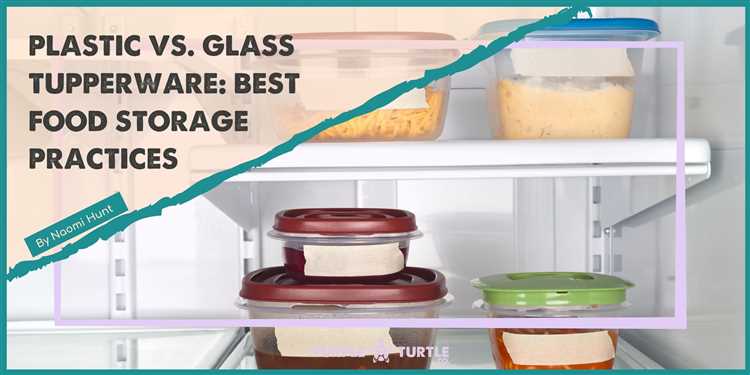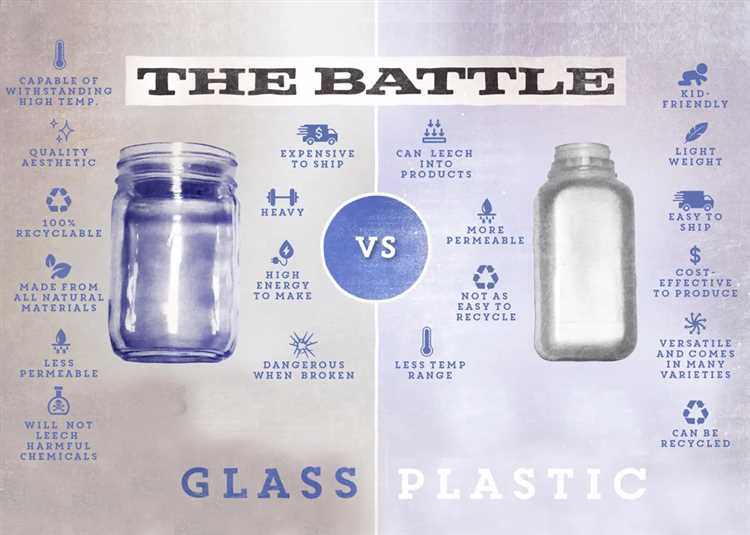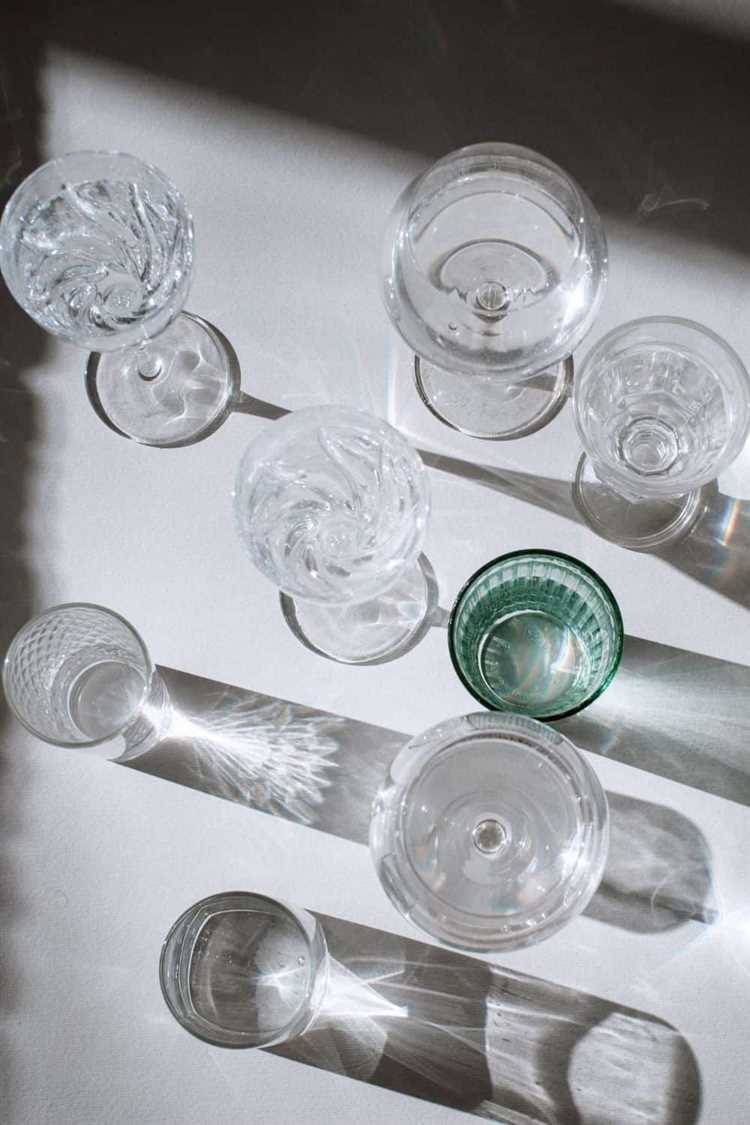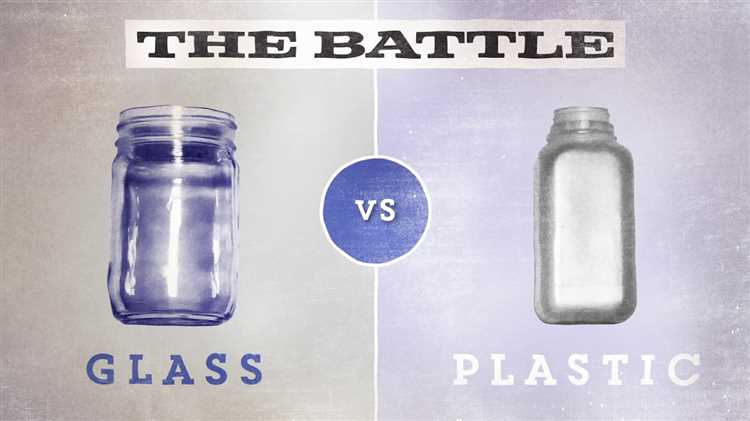Glass and plastic are two common materials used in the production of various products. They both have their advantages and drawbacks, but when it comes to safety, which one comes out on top? Let’s take a closer look.
Firstly, let’s talk about glass. Glass is a brittle material that can easily break with impact. However, when it does break, it shatters into sharp pieces, which can pose a risk of injury. On the other hand, glass is known for its durability and resistance to scratches and stains, making it an excellent choice for products that require longevity.
Now, let’s move on to plastic. Plastic is a flexible material that is less likely to break compared to glass. When it does break, it tends to crack rather than shatter, reducing the risk of injury. Plastic is also lightweight and cost-effective, making it a popular choice for many consumer goods.
So, which one is safer? The answer depends on the specific context and intended use. Glass may be a safer option for products that need to withstand high temperatures or need to be resistant to scratches or stains. Plastic, on the other hand, may be a safer choice for products that are more likely to be dropped or subjected to impact, such as drinking bottles or children’s toys.
In conclusion, both glass and plastic have their safety considerations. It is essential to evaluate the specific purpose and context in which these materials will be used to determine which one comes out on top in terms of safety.
- Safety Considerations for Glass and Plastic Materials
- Glass Safety Considerations
- Plastic Safety Considerations
- Durability and Resistance to Breakage
- Glass
- Plastic
- Potential Hazards and Risks
- Heat and Chemical Resistance
- Environmental Impact and Sustainability
- Q&A:
- Why is it important to compare the safety of glass and plastic?
- What are the main safety considerations when comparing glass and plastic?
- Which material, glass or plastic, is more resistant to breakage?
- Can chemicals from plastic leach into food or beverages?
- What is the environmental impact of glass compared to plastic?
- What are the advantages of using glass for packaging compared to plastic?
Safety Considerations for Glass and Plastic Materials

When it comes to choosing between glass and plastic materials, safety considerations should be a top priority. Both glass and plastic have their own unique properties and potential hazards that need to be taken into account.
Glass Safety Considerations

Glass is generally favored for its durability and strength, but it is not without its risks. One of the main safety considerations with glass is its tendency to shatter when broken. This can pose a significant risk of injury, especially if the shattered glass is sharp and jagged. Additionally, glass can be heavy and cumbersome, making it more difficult to handle and transport safely.
To mitigate the risks associated with glass, several precautions can be taken. Using tempered or safety glass, which is designed to break into smaller, less sharp pieces, can help reduce the risk of injury. Proper handling and storage techniques should also be implemented to minimize the likelihood of breakage. Additionally, using protective barriers and safety equipment, such as gloves and goggles, can help prevent injury in the event of glass breakage.
Plastic Safety Considerations
Plastic materials, on the other hand, may offer some advantages when it comes to safety. Unlike glass, plastic is less likely to shatter when dropped or impacted. Instead, it may crack or deform, which can still pose risks, but is generally less hazardous than broken glass. Plastic is also typically lighter and more flexible than glass, making it easier to handle and transport safely.
However, not all plastics are created equal in terms of safety. Certain types of plastics may contain harmful chemicals, such as BPA or phthalates, which can leach into food or liquids and pose health risks. It is important to choose plastic materials that are labeled as food-safe and free from potential toxins. Additionally, proper disposal and recycling of plastic products should be practiced to minimize environmental risks.
In conclusion, safety considerations for glass and plastic materials should be carefully evaluated when making a choice between the two. While glass may be more durable, it comes with the risk of shattering and potential injury. Plastic, on the other hand, is less likely to shatter but may contain harmful chemicals if not chosen carefully. Ultimately, choosing the right material for a specific application requires carefully weighing the safety considerations and taking appropriate precautions.
Durability and Resistance to Breakage
When comparing safety between glass and plastic, durability and resistance to breakage are critical factors to consider. Both glass and plastic have their own strengths and weaknesses in this aspect.
Glass
Glass is often praised for its durability and resistance to breakage. It is a solid and sturdy material that can withstand high impact without shattering. In addition, glass is scratch-resistant and does not degrade over time. These qualities make glass an excellent choice for many applications where safety is a concern.
However, it is important to note that glass, while durable, can still break under extreme force or impact. When glass does break, it tends to shatter into sharp fragments, which can pose a risk of injury. This is a significant drawback when it comes to safety, especially in environments where accidents are more likely to occur.
Plastic
Plastic, on the other hand, is generally known for its flexibility and impact resistance. Unlike glass, plastic does not shatter when it breaks. Instead, it tends to deform or crack, reducing the risk of injury. This characteristic makes plastic a safer option in certain situations, such as for packaging or in areas where accidents are more common.
However, it is important to note that not all plastics are created equal when it comes to durability and resistance to breakage. Certain types of plastic, such as polycarbonate, are exceptionally strong and can offer comparable durability to glass. Other types, such as thin plastic films or low-quality plastics, may be more susceptible to breaking or tearing.
Overall, when comparing durability and resistance to breakage, both glass and plastic have their advantages and disadvantages. Glass is known for its overall sturdiness and scratch resistance, but it can shatter and create sharp fragments when broken. Plastic, depending on the type, can offer flexibility and impact resistance, but may not be as durable as glass in certain applications. It is crucial to consider the specific needs and requirements of the intended use when making a choice between glass and plastic.
| Glass | Plastic |
|---|---|
| Durable | Flexible |
| Scratch-resistant | Impact-resistant |
| Breaks into sharp fragments | Deforms or cracks when broken |
Potential Hazards and Risks

When it comes to potential hazards and risks, both glass and plastic have their own set of concerns. Understanding these risks can help consumers make informed decisions about which material to choose for certain applications.
One of the main hazards associated with glass is its tendency to shatter when dropped or subjected to extreme force. This can result in sharp, jagged pieces that can cause serious injury. Additionally, glass can be heavy and break easily if not handled properly, leading to potential cuts or puncture wounds.
Plastic, on the other hand, is known for its durability and flexibility, which can make it a safer option in some scenarios. However, certain types of plastics can release harmful chemicals when exposed to heat or certain solvents. These chemicals can be hazardous to human health and the environment, making it important to choose plastics that are specifically designed for the intended purpose.
Another concern with plastic is its potential to leach chemicals into food or beverages. This is especially true when plastic containers are used for hot liquids or acidic foods, which can cause the release of substances such as bisphenol A (BPA) into the contents. These chemicals have been linked to various health issues, including hormone disruption.
Furthermore, plastic products have the potential to accumulate in landfills and oceans, contributing to environmental pollution. This can have long-term impacts on wildlife and ecosystems.
- Glass:
- Plastic:
In conclusion, both glass and plastic come with their own hazards and risks. The choice between the two depends on the specific application and the potential health and safety concerns that come with each material.
Heat and Chemical Resistance
When it comes to heat and chemical resistance, glass is often the preferred choice. Glass can withstand high temperatures without warping or melting, making it ideal for applications such as laboratory equipment and cookware. It also has excellent resistance to chemicals, including acids, alkalis, and solvents.
Plastic, on the other hand, has lower heat resistance compared to glass. It can melt or deform at high temperatures, which can limit its use in certain applications. Additionally, plastic is not as resistant to chemicals as glass. Some chemicals can degrade or dissolve plastic, potentially causing contamination or damage.
Overall, glass offers superior heat and chemical resistance compared to plastic. Its ability to withstand high temperatures and resist chemicals makes it a reliable choice for various industries and applications.
Environmental Impact and Sustainability

When comparing the environmental impact and sustainability of glass versus plastic, it is important to consider several factors.
1. Raw materials:
Glass is made primarily from sand, soda ash, and limestone, which are abundant and easily accessible resources. On the other hand, plastic is derived from petroleum, a non-renewable fossil fuel. The extraction and processing of petroleum contribute to various environmental issues, such as air and water pollution.
2. Manufacturing process:
The production of glass requires high temperatures and energy-intensive processes. However, it is worth noting that glass can be recycled indefinitely without losing its quality, reducing the need for new production. Plastic, on the other hand, is created through polymerization, which also requires significant energy. Most plastics have a limited number of recycling cycles and eventually end up in landfills or incinerators.
3. End of life:
Glass is inert and does not release harmful chemicals when in contact with food or beverages. It is also recyclable, and the recycled glass can be used to make new glass products. In contrast, plastic can leach toxins into food or water, especially when exposed to heat or sunlight. Additionally, plastic takes hundreds of years to decompose, contributing to the growing problem of plastic pollution in landfills and oceans.
4. Waste management:
While both glass and plastic can be recycled, the recycling infrastructure for glass is more well-established. Glass containers have a higher recycling rate compared to plastic bottles. Plastic waste often ends up in landfills or is incinerated, causing harm to the environment and wildlife.
In conclusion, glass is generally considered to have a lower environmental impact and greater sustainability compared to plastic. Its raw materials are abundant and easily accessible, it can be recycled indefinitely, and it does not release harmful chemicals. Plastic, on the other hand, relies on non-renewable resources, has limited recycling potential, and contributes to pollution and waste management issues. Choosing glass over plastic can be a more environmentally responsible choice.
Q&A:
Why is it important to compare the safety of glass and plastic?
It is important to compare the safety of glass and plastic because both materials are commonly used for packaging, food storage, and other purposes, and it is crucial to understand which material is safer for various applications.
What are the main safety considerations when comparing glass and plastic?
The main safety considerations when comparing glass and plastic include the risk of breakage and potential injury, the leaching of chemicals into food or beverages, and the environmental impact of each material.
Which material, glass or plastic, is more resistant to breakage?
Glass is generally more resistant to breakage than plastic. It is a harder and more rigid material, making it less prone to cracking or shattering. However, plastic containers made from durable materials like polycarbonate can also be quite resistant to breakage.
Can chemicals from plastic leach into food or beverages?
Yes, certain types of plastic containers can leach chemicals into food or beverages, especially when exposed to heat or acidic contents. This can be a concern for health, as some of these chemicals, such as BPA, have been linked to potential health risks.
What is the environmental impact of glass compared to plastic?
Glass has a higher environmental impact compared to plastic when considering factors such as energy consumption, greenhouse gas emissions, and recycling rates. Glass production requires more energy and generates more emissions than plastic production, but glass is recyclable and can be recycled indefinitely, whereas plastic recycling rates are lower.
What are the advantages of using glass for packaging compared to plastic?
There are several advantages of using glass for packaging compared to plastic. First, glass is nonporous, which means it does not absorb or release any chemicals into the products it holds. Second, glass is more resistant to scratches and abrasions, making it longer-lasting and more durable compared to plastic. Finally, glass is fully recyclable and can be reused multiple times, making it a more sustainable choice.